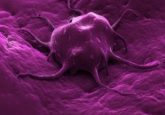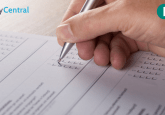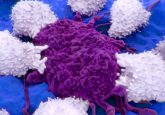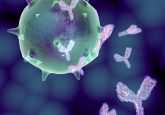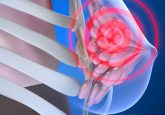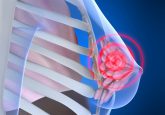Overcoming data flow challenges in cell therapy trials: an interview with Olivier Saulin

Over the past decade cell therapy studies have flourished, with several being approved by the US FDA, placing them in prime position as a promising treatment option for cancer patients. In this interview we speak with Olivier Saulin (ICON, Dublin, UK) about how data flows in cell therapy studies differ from other studies, strategies to overcome data flow challenges as well his predictions for how the field will advance over the next few years.
Can you describe why the data flows in cell therapies differ from other oncology studies?
Cell therapies studies have flourished in the past 10 years, becoming a very promising treatment for cancer patients. To date five Chimeric Antigen Receptor (CAR) products (Kymriah©, Yescarta©, Tecartus©, Abecma© and Breyanzi©) are US FDA approved. CAR-T cells have elicited remarkable responses in patients with certain haematological malignancies, being relapsed or refractory after several lines of chemotherapies. CARs are engineered synthetic receptors that function to redirect lymphocytes to target and eliminate cells expressing a specific target antigen. Due to the nature of this product being living cells, this modality presents some unpredictable challenges that must be addressed including life-threatening CAR-T cell-associated toxicities (neurotoxicities, cytokine release syndrome events), limited persistence of cells and poor trafficking.
Cell therapies studies have flourished in the past 10 years, becoming a very promising treatment for cancer patients. To date five CAR products are US FDA approved.
CGT (Cell and Gene Therapy) sponsors generate multiple complex and key data points throughout a product’s lifecycle that need to be stored and analyzed properly. The particularity of the CGT field is that much of the work is performed in collaboration with research, development, manufacturing and/or academic partners.
CGT sponsors start collecting data from the research stage, with engineering and profiling data generated to support analytical method development (for control of the manufacturing process, raw materials, intermediates and the final product) and validation of intended methods. From a clinical research perspective and for CGTs, it is typical for external specialised courier vendors to handle the increasing complexity of a vein-to-vein process – from shipping patient samples and collecting the related patient, chain-of-custody, and chain-of-identity data. A ‘vein-to-vein’ process is a particular facet of autologous approach, where cells are removed from the patient’s bloodstream, reengineered and then infused back into the same patient. Additionally, CGT sponsors collect breadth of data from bioanalytical chemistry to molecular biology.
ICON has accrued significant experience with cell therapy studies in oncology – over 81 studies with over 2000 patients infused within the last 5 years. ICON has and continues to manage multiple Biological Licence Applications. Our data management group has observed several typical characteristics for this type of study:
- The majority of subject data is generated in the first 2 months of each patient’s single infusion in a CGT study, creating an intense burden on sites (for every two patients enrolled, 500 case report forms need to be entered over 6 months).
- Cell therapy is generally tested on late-stage cancer patients so the patient data generates a bolus of adverse events and concomitant medication.
- Patients are usually hospitalized during the first 14 days after infusion, presenting some challenges to collect source documents quickly and getting data entered for electronic data capture for ongoing safety review.
Due to the relative novelty and unexpected safety of cell therapy, in Phase I and II studies there is a need for a regular review of safety data to guide escalation or de-escalation of dose levels or make decisions regarding the continuation of the trial or review CAR-T related adverse events such as IEC-associated neurotoxicity syndrome (ICANS) or cytokine release syndrome (CRS). Additionally, cell therapies have tremendous potential to satisfy unmet patient needs across a broad range of disease areas, so if sponsors see efficacy signals for a certain subtype of disease, they will submit data early for accelerated fast track FDA programs. CROs should be prepared for this quick and quality data delivery such as urgent and regular safety reviews, regulatory submissions following an intense efficacy signal in one subtype of a disease, early submissions to FDA for a breakthrough therapy designation (BTD) designation etc. We emphasize that the sponsor needs to proactively outline and share with sites/CRO/vendors, key milestone planning around data deliverables as well as the precise scope of data (patients/visits/external data etc.). Any miscommunication during the planning process can delay the development program with potential financial impact. Additionally, these therapies benefit patients with serious untreatable conditions; any delay in a development program will risk patients being left without treatment options.
This high generation of data around the infusion time is due to the fact that protocols usually request daily data collection, through days 8 or 14 post-infusion. This includes daily labs for 14 days to review cytokine levels of CAR-T persistence, as well as multiple assessments for visits around infusion time at multiple time points during the day for example, vital signs. Compared with other oncology studies, there are additional complexities of cell therapy studies. Patients have to undergo multiple procedures/visits such as leukapheresis, lympho-depletion chemotherapy and infusion – all of which produce a multitude of data points whilst being precise about chain of identity monitoring i.e., tracking of donor identification number. Additionally, Chemistry, Manufacturing and Controls (CMC) data and CMC data are separate datasets that define: 1) the manufacturing process such as concentration of starting materials like CD3 cells or type of vector used; 2) the quality control release testing specifications such as number of CAR cells produced or number of T cells sub-type produced like CD4 and CD8; and 3) the stability of the product making the product conformant or non-conformant.
These types of studies require sample analysis at many different analytical laboratories for cytokine level, immunogenicity or flow cytometry to detect malignant cells by protein expression and CAR proliferation. A cell therapy study on average manages three times more lab analyses than any other oncology study. In non-cell therapy oncology studies, drug developers traditionally select analytical laboratories for the exploratory endpoints and request a batch analysis of all samples at the end of the trial. For cell therapy studies, analytical laboratories provide data supporting primary and secondary endpoints, namely quantity and persistence of CAR-T cells.
A cell therapy study on average manages three times more lab analyses than any other oncology study.
Our statistics specialists have observed some significant challenges. The volume of repeat outputs (TLGs) is the most notable difference with a large number of analyses that need to be repeated by population, cohort and subgroups like hematologic subtypes of the cancer plus additional sensitivity analyses. Sponsors commonly require multiple ad-hoc complex analyses based on biomarker expression in order to define potential predictive biomarkers. Finally, yet importantly, safety is further analyzed in cell therapy studies focused on the Treatment Emergent Adverse Events (TEAE) and adverse events of special interest.
Cell therapy protocols are usually complex adaptive study designs with multiple disease sub-type cohorts; which result in the requirement for complex electronic case report forms/database designs with large case report forms, dynamic pages and queries built in based on various patient conditions/cohort. During the course of a study, multiple post-production database changes are common due to numerous protocol amendments that result from safety signals or the addition of cohorts or new findings from the evolving cell therapy field.
One important factor of note is that in CGT, where we are dealing with genetically modified organisms (GMOs), there is a regulatory requirement to collect data for 15 years after the patient infusion of product so investigators, CROs and pharma companies need to follow the patient for a long period with the pursuant logistical challenges.
Robust long-term data collection is a key point of discussion between sponsors and regulators regarding patient access to cell and gene therapies, as these therapies are new and there is still much to learn about the safety and efficacy of these therapies once they are commercially available.
Logistical challenges are as follows: during this long-term follow up period, infused patients may move and receive other antineoplastic drugs at other cancer centres. Study nurses, principal investigators and clinical staff may also change positions, locations, or retire over this time. ICON has been working with different tools such as webinars with clinical staff to engage clinical teams to ensure they commit to comply with long-term follow up protocols and collect data for the study.
Could you outline potential strategies that could be used to overcome data flow challenges in oncology?
ICON reorganized its resourcing and created new tools to manage the bolus of data. Resourcing cell therapy studies is something we have successfully overcome by working with sponsors in collectively planning resource early in the study so that we can deploy resources rapidly to respond to the prevailing needs as I described earlier.
ICON has been supporting academic CAR-T sites by providing external data entry solutions from our in-house home health/alternative site solution organization. ICON has been creating site-specific data entry plans to set expectations early with site staff concerning the high flow of data and frequent data cleaning cycles. The plans ensure each site has their own resourcing solution, including back up resource, to ensure data currency.
The key to successful management is our ability to provide our sponsors with clean data on an ongoing basis for review, facilitating rapid decision-making for safety review committees, adjudication committees and contributing to posters or publications. We use our CGT specific robust data tracking and monitoring projection tools to map out the site data entry and monitor burden. Our monitoring projection tool is study specific and can model the resource needs from the study start.
A pillar of our success is the training of our teams including CRAs, data managers and statisticians through our online CGT Academy. ICON invests in this training academy to upskill and educate ICON team members in clinical science and CGT trial specifics – from logistics to safety to data management in order to ensure that well-trained resources are available to sponsors. ICON is accustomed to the rapid deployment of team members who can effectively monitor and manage clinical sites in complex CGT clinical trials.
Emerging toxicities is one the challenges facing targeting cell therapies for solid tumors. Could you talk us through some of the tools that can be used to manage and improve these toxicities observed?
Cell therapy has been successful in treating some rare hematologic cancers, but it is still a challenge to treat solid tumors. The most common toxicity specific to genetically modified targeted T cells is “on-target off-tumor,” which occurs when re-directed T cells attack non-tumor healthy cells expressing the same target antigen or when the cells are directed against an antigen other than the intended one. In the case of a CAR-T directed against CD 19 hematologic malignancies, B cell aplasia is a predictable “on-target, off tumor” toxicity for any new cell therapy directed against a tumor-associated antigen.
Safety data are traditionally reported in a tabular or listing format, i.e. paper listing of deaths, other serious adverse events and other significant adverse events, which often translates into many pages that are static, relating to a specific date and time. Some sponsors frequently ask for specific tables, figures and listings to review certain safety data like listing of CRS events. The process of running TFLs is labor intensive, and not always cost effective. Additionally, it poses the risk that clinically relevant signals will be obscured by the volume of data reported.
ICON recommends the best solution is to review safety signals with the ICONIK© Platform – a dynamic visualisation tool designed with multiple stakeholders in mind, from statisticians to medical reviewers, in order to guide the development of a set of interactive data visualizations that enable key safety assessments. ICONIK allows for frequent, near real-time data updates. ICONIK has different modules: The Patient Profile module is designed specifically for safety data reviews with medical monitor needs in mind. It allows for the detection of signals and trends in aggregated data and quickly drills into patient profiles to follow patients longitudinally. Data can be reviewed in a range of timeframes – days, weeks or months from Randomization Date. One interesting feature of the tool is its power to perform domain crosschecks allowing for review of data of various domains for all subjects and within selected groups of cohorts or treatment arms. Last, but not least, ICON has created tumor assessment modules specifically with Medical Monitor needs in mind to allow for the tumor progression and overall response analysis, per RECIST criteria to identify efficacy trends. In summary, interactive graphics enable a broad selection of information usually located in traditional reports such as TFLs or patient profile but allows the user to interact with the charts in near real time, focusing on signals of interest.
How would you like to see the field evolve over the next 5 years regarding the way in which we collect and manage safety data for cancer cell therapy studies?
Cell therapy studies in oncology target patients in serious conditions, with potential serious adverse events; for all these reasons, it is critical for sponsors to collect safety data in real time and even remotely from the patients. We are starting to see some of the benefits of incorporating digital health technologies amid the COVID-19 pandemic. The acceleration of their adoption is a combination of factors, including the growing ability of suitable technology and the increased adoption of these devices.
We are starting to see some of the benefits of incorporating digital health technologies amid the COVID-19 pandemic.
As an example for cell therapy studies like CAR-T, fever, particularly high fever, is commonly associated with CRS and is a pre-condition for diagnosis of CRS in the ASBMT consensus group grading system. CRS is a potentially life-threatening condition occurring as early as 1 day after CAR-T cell infusion, and early symptoms of CRS can predict more severe toxicity for both CRS and neurotoxicity (Hay 2017). Patients are required to take an oral temperature reading 3−4 times per day to detect any fever, and alert their physician to administer corticosteroids and interleukin 6 (IL-6)-blocking agents such as tocilizumab, in case of severe CRS. Unfortunately, patients are not always compliant in measuring temperature, which results in delays in identification of CRS and early intervention. In order to increase patient safety, CROs and technology companies will work more and more with sponsors to introduce in clinical studies technologies like wearable devices; which use sensors to collect health-related data remotely such as temperature monitoring. Wearable devices have the capability to ensure continuous monitoring, increased compliance, and earlier detection – ultimately increasing patient safety after CAR-T infusion.
Of course, it is important that regulators like the FDA validate these devices and approve the review data coming from them. Wearables can collect information on various biometric data points such as heart rate, respiratory rate, blood oxygen saturation, and sleep pattern. In the cell and gene therapy space, typically, patients in the inpatient setting have their vital signs, including temperature, blood pressure, and heart rate, monitored approximately every 4 hours due to the unpredictable events following cell infusion. However, sponsors in CGT tend to allow patients to be discharged from the hospital rapidly after the CAR-T infusion, requiring the patient to self-monitor their vital signs. The use of a wearable device to monitor a patient’s vital signs outside of the hospital would provide a solution. In oncology cell therapy, wearables may offer new vital information about patients, which can potentially lead to better management of cancer treatment. We could imagine a remote device, which monitors Interleukine 6 levels in blood after administration of CAR-T product and guide the doctors to manage toxicities like CRS.
Any closing comments?
In cell and gene therapy environment, ICON and CROs will need to work collaboratively with sponsors in order to use innovative technologies like medical devices to optimize our data collection and select the right visualization systems based on the medical review needs, and the data extractions needs.
Interviewee profile:

My name is Olivier Saulin and I hold a Masters in Biochemistry. I started my career in 2002 in clinical data management in a large pharmaceutical company and experienced the rapid digitalization of clinical trials. After 9 years in the biometrics field, I moved into different positions in large CROs from Clinical Project Manager to Program Manager. Seven years ago, my specialty became operationalizing studies evaluating cell and gene therapies. My double competency as a biochemist as well as Project Management expert led me to the role of Cell and Gene Therapy (CGT) principal supporting cross-functional CGT teams in understanding nuances of CGT studies in oncology. In parallel, I oversee multiple programs in immune-oncology cell therapy and provide consulting to early-stage clients about their CGT clinical development programs.
The opinions expressed in this interview are those of the author and do not necessarily reflect the views of Oncology Central or Future Science Group.
In association with ICON:
